ELDERBERRY
This medicine plant is sacred to the Druids and Indigenous peoples of Turtle Island but often seen as a 'weed' to conventional farmers and monoculture gardeners. Let us explore her many gifts.
This plant was used by my Celtic ancestors and Native Americans for many medicinal purposes. The purple-black fruit is attractive to birds that spread the seeds. The fruit makes tasty jelly and wine (and many other things).
Believe it or not, here in southern Ontario this sacred medicine plant is hated by the conventional corn and soy farmers (and some gardeners!) as new Elderberry bushes start in their fields (and gardens) that are up against little patches of forest and the birds help start new bushes as well. Rather than seeing the appearance of Elderberry bushes the blessing that they are, some wage chemical warfare on the Elder bushes using big machines in the farm fields and others hire landscapers to rip them out of the garden. This insane and illogical behavior I observe around where we live led me to include this wonderful plant in the 12 days of eating ‘weeds’ series.
The Elder tree (Sambucus spp.) has over 26 different varieties found throughout the world. Here in Eastern Canada (and the US) the most common elder we have is Sambucus Canadensis, or “Canada elderberry” or “common elderberry” aka the black elder. The article below will focus on the black elderberry as this is the elder that I have the most experience with, but it is worth noting that that most of what I’m discussing can apply to other kinds of edible elderberries (such as Sambucus Nigra and Sambucus cerulea).
Health benefits of the elder plant include naturally improving sinus issues, nerve pain, inflammation, chronic fatigue, allergies, constipation and even cancer. When used within the first 48 hours of onset of symptoms, the extract helps relieve and shorten the duration of cold and flu symptoms as well.
History and cultural significance of Elderberry:
Elderberry is an incredible food and medicine for humans, and we have long cultivated a rich relationship with elder.
The Elder is a tree that is also richly steeped in lore and mysticism around the world.
Known as Ruis - (pronounced roo-esh) to my Celtic ancestors in the Druidic Ogham Script and known as Bibigwemin to the Potawatomi/Ojibwe peoples in the Anishinaabemowin language.
Because of its place as an Ogham tree Elder is seen as being imbued with potent magic. Elder has long been recognized as an important plant ally and has an incredibly rich tie to magic and folklore.
Elder is one of the 22 trees in the Ogham, the Celtic tree alphabet. It is distinguished by five lines and is tied to the Ogham letter “R” and “Ruis.” The Elder, as an Ogham tree, is said to have strong connections to the fairy realm (as both a gateway as well as the tree representing the Queen of the Fairy, in some tales). In Ogham, the general divination meaning of Elder is tied to Venus (as a water-loving plant) and to the element of water. Her meanings are many, but are often tied to transformation; regeneration; life, death and rebirth; endings; and fate.
Like any powerful magical plant, Elder mythology speaks of both beneficial aspects as well as warnings to heed, as with any other very potent plant ally. In the Encyclopedia of Natural Magic, John Michael Greer describes Elder as both “harmful” and “helpful” depending on how it is used. As long as elder is kept out of the house, it can bring a host of magical protection. People have planted elder outside of their houses, for example, for deflecting hostile magic; similarly, elder was planted in cemeteries to allow the dead to rest in peace. Elder was used to fasten doors shut or tied to windows and doors to keep out the fey as well as other kinds of hostile magic and also used in barns for this same kind of protection. If the elder was gathered on Beltane eve, it was particularly potent for this purpose. It is said that all of these good and protective qualities, however, go away if you take Elder indoors in most cases—the tree spirit is said to get a bit angry and feisty. If you burn elder wood, it is said you can summon evil spirits.
R is Ruis, the Elder tree, which is connected to the time of the Winter Solstice. The Elder represents endings, maturity, and the awareness that comes with experience. Pronounced roo-esh, some say that Ruis is a sign that things may be ending, but will yet begin again. Although the Elder is easily damaged, it recovers and is rejuvenated easily.
The Elder is also strongly connected with Goddess spirituality, and the workings of the Fae. The soft wood has a lightweight core that can be pushed out to create a hollow tube–perfect for a Faerie flute! Elder was also planted near dairy barns, in the belief that its presence would keep the cows in milk, and prevent collected milk from spoiling. Elder flowers and berries are often brewed to fight fever, cough, and sore throats.
The etymology of the Latin term for elder, Sambucca, has an interesting history. Dana O’Driscoll (of “The Druids Garden”) researched this topic in depth and found references to a Sambuca (or Sambuke in Ancient Greek) that is an ancient instrument that apparently gave Elderberry its Latin name. In The Earthwise Herbal, Matthew Wood explains that panpipes were originally made from Elder and tied to Pan, the lord of the forest.
Here is a video of an artist playing a flute made out of Elderberry wood:
There are some good instructions on making simple elderberry flutes, for those who are interested.
One of Elder’s anachronistic names also offers some additional insight: the Anglo-Saxon term “aeld” means “fire.” According to Grieve, Aled eventually became Elder. The original “fire” use referred to the hollow stems being used as a fire tube for blowing oxygen onto the flame. This could be a really important aspect of the story of Elder here in what is now Canada and the US.
Matthew Wood, in the Earthwise Herbal describes how the North American Natives and Europeans were in the tradition of making offerings to the elder. North American settlers and indigenous peoples made offerings at each elder plant when picking them for use. Europeans believed Elder was the “elder mother” or “hylde moer”, who was Queen of the Fairy or Queen of the Underworld—a powerful and potent force. Each elder tree had a “little elder mother” that lived there; they would make offerings at the base of the elder tree, to the little elder mother, to encourage good harvest and potent medicine from the elder.
Medicinal use of Elderberry:
Elder has a very long history of household use as a medicinal herb and is also much used by herbalists. The plant has been called "the medicine chest of country people". The flowers are the main part used in modern herbalism, though all parts of the plant have been used at times. Stimulant. The fresh flowers are used in the distillation of "Elder Flower Water". The flowers can be preserved with salt to make them available for distillation later in the season. The water is mildly astringent and a gentle stimulant. It is mainly used as a vehicle for eye and skin lotions. The dried flowers are diaphoretic, diuretic, expectorant, galactogogue and pectoral. An infusion is very effective in the treatment of chest complaints and is also used to bathe inflamed eyes. The infusion is also a very good spring tonic and blood cleanser. Externally, the flowers are used in poultices to ease pain and abate inflammation. Used as an ointment, it treats chilblains, burns, wounds, scalds etc. The fruit is depurative, weakly diaphoretic and gently laxative. A tea made from the dried berries is said to be a good remedy for colic and diarrhoea. The fruit is widely used for making wines, preserves etc., and these are said to retain the medicinal properties of the fruit.
Medicinal benefits confirmed by modern science:
Some of the medicinal benefits of Elderberries include:
1. Provides Cold and Flu Relief
One of the most well-studied elderberry syrup benefits is its powerful immune-boosting properties. The berries contain chemical compounds called anthocyanidins, which are known to have immunostimulant effects.
Research actually shows that elderberry is a safe, efficient and cost-effective treatment for the common cold and flu. A 2021 systematic review screened 1,187 records and five randomized trials on elderberry for the treatment or prevention of viral respiratory illness. Researchers found that elderberry may reduce the duration and severity of symptoms related to colds and influenza, and there’s no evidence that it overstimulates the immune system.
A 2016 study published in Nutrients showed that elderberry supplementation was able to reduce cold duration and symptoms in people using air travel. People using this herb from 10 days before travel until four to five days after arrival overseas experienced, on average, a two-day shorter duration of their colds as well as a noticeable reduction in cold symptoms.
Several studies have found benefits to support the use of elderberry syrup for flu symptoms as well. Specifically, the flavonoids in the extract bind to the H1N1 human influenza virus as well as the H5N1 avian influenza virus.
A 2009 study randomized patients into two groups. One group was given four doses of 175-milligram proprietary elderberry extract daily, and the other group received a placebo for two days. The group treated with the extract showed significant improvement in most flu symptoms, while the placebo group showed no improvement in symptom severity. Researchers conclude that the extract is effective in controlling influenza symptoms.
The group treated showed significant improvement in most signs of flu, while the placebo group showed no improvement in symptom severity. Researchers concluded that the extract is effective in controlling influenza symptoms.
Another study published in the Journal of International Medical Research referenced above suggests that when elderberry is used within the first 48 hours of the onset of signs of flu, it can shorten the duration of flu symptoms by an average of four days.
2. Reduces Sinus Infection Symptoms
With elderberry’s anti-inflammatory and antioxidant properties, it makes sense that it can help treat sinus issues. A sinus infection is a condition in which the cavities around the nasal passages become inflamed, and this antiviral herb has promise as a sinus infection natural remedy.
A study conducted by the Institute of Complementary Medicine’s Department of Internal Medicine at the University Hospital in Zurich, Switzerland examined the use of a product called Sinupret, which contains elderberry extract. The researchers used Sinupret to treat bacterial sinusitis along with an antibiotic (doxycycline or vibramycin) and a decongestant. Interestingly enough, those who took the combination did better compared to those who did not take Sinupret at all.
In addition to using elderberry syrup for colds, the flowers of the elder plant are also known to be an effective herbal allergy remedy. Since allergies involve an overreaction of the immune system as well as inflammation, the herb’s ability to improve immune function and calm inflammation can help provide allergy relief.
Some herbalists put black elder flower on the list of most effective herbs used for treating hay fever-like symptoms. It can be used for allergies on its own or in combination with other herbs and natural remedies.
Edible berry extracts like elderberry extract are rich in anthocyanins and have been shown to have a broad spectrum of therapeutic, pharmacologic and anti-carcinogenic properties. In vitro studies specifically indicate that the elderberry has some chemopreventive properties, which can help inhibit, delay or reverse cancer formation.
One study published in the Journal of Medicinal Food compared the anticancer properties of European and American elderberry fruits. European elderberry (Sambucus nigra) is known for its medicinal use and contains anthocyanins, flavonoids and other polyphenolics, which all contribute to the high-antioxidant capacity of its berries. American elderberry (Sambucuscanadensis) has not been grown or promoted as a medicinal plant like its European relative.
This study tested extracts of both berries to assess anticancer potential and found that both demonstrated significant chemopreventive potential. Additionally, the American elder extract showed inhibition of ornithine decarboxylase, which is an enzyme marker related to the promotion stage of cancer formation. Thus, elderberries show potential as cancer-fighting foods.
Although studies have found mixed results, some research suggests that elderberry extract may improve heart health. For example, one animal model showed that giving mice with high cholesterol and HDL cholesterol dysfunction anthocyanin-rich black elderberry extract helped reduce hepatic cholesterol levels and improved HDL function. This may be due to the presence of anthocyanins, which are polyphenols that have demonstrated antioxidant and anti-inflammatory activities.
Another study found that elderberry extract may have beneficial effects on high blood pressure. When polyphenols extracted from the plant were administered with renin inhibitors to rats with hypertension, they reduced arterial pressure.
Researchers suggest that using polyphenols to lower blood pressure may also help reduce the side effects of blood pressure-lowering medications and improve overall quality of life.
The calcium, iron, and potassium in the berries are known to strengthen bones and increase bone mineral density, cutting the risk of osteoporosis as a result.
Experiments show the benefits of natural polyphenols extracted from the Elder (Sambucus nigra) fruit on osteoporosis regression. Extremely low bone mineral density is improved by polyphenol delivery. Thus, a dietary intake rich in natural polyphenols helps lead to the regression of osteoporosis. Osteoporosis regression due to the Sambucus nigra extract shows us how powerful these berries are for preventing bone degradation and speeding up bone healing.
Additionally, the anthocyanins in the berries prevent bone loss.
7. Can Boost Vision Health
Being rich in vitamins A and B6, elderberries can help prevent serious vision ailments like glaucoma and macular degeneration. The antioxidant activity of elderberries also helps ensure vision health in the long run.
One study talks about how the anthocyanins in berries (including elderberries) can help treat cognitive impairment and the resultant conditions like Alzheimer’s.
Elderberries are also replete with quercetin, which is an important flavonoid critical for brain health. Quercetin reduces the harmful inflammation at a cellular level. It also activates the mitochondria in your cells – which are powerhouses that boost cell health.
Optimizes Mitochondrial Health and increases the production of adult stem cells:
Elderberries contain a number of medicinal compounds (such as anthocyanins, minerals and essential vitamins) that optimize mitochondrial function.
As mentioned above, Mitochondria are the powerhouses of your cells, generating energy to fuel your cells’ biochemical reactions. Via optimizing their function and promoting their rates of regeneration within your body you are building a solid foundation for health, vibrancy and longevity from the cellular level up.
Sufficient mitochondrial biogenesis (the process by which cells increase mitochondrial numbers) is necessary for efficient cell function and haemostasis, which is dependent on the regulation of ATP generation and maintenance of mitochondrial DNA (mtDNA). These procedures play a primary role in the processes of inflammation, aging, cancer, metabolic diseases, and neurodegeneration. Polyphenols (such as anthocyanins) are considered as the main components of plants, fruits, and natural extracts with proven therapeutic effects during the time. These components regulate the intracellular pathways of mitochondrial biogenesis.
In vitro studies showed that anthocyanins elevate the expression of mitochondrial TFAM, PGC-1α, and NRF-2. These increased levels affect the phosphorylation of AMPK and increase rates of mitochondrial biogenesis.
The studies available also support the ability of anthocyanins to prevent damage to mitochondria and to sustain its function. Berry extracts also demonstrated positive outcomes in different models of neurodegeneration, endothelial dysfunction, myocardial damage, metabolic disorders, longevity, and cancer. At the molecular level, major anthocyanins can modulate the expression and activity of mitochondrial proteins, apoptotic and biogenesis factors, antioxidant defenses, inflammation, and the AMPK pathway. Noteworthy, anthocyanins could balance abnormalities in ROS production, respiration, and mitochondrial fragmentation in cells exposed to toxicants or oxidizing agents.
Habitat of Elderberry:
Both Sambucus canadensis (American black elderberry, Canada elderberry, or common elderberry) and Sambucus cerulea (blue elderberry and blue elder) have edible and nutritious fruit that can be gathered.
Sambucus canadensis, the American black elderberry, Canada elderberry, or common elderberry, is a species of elderberry native to a large area of North America east of the Rocky Mountains, south to Bolivia. It grows in a variety of conditions including both wet and dry soils, primarily in sunny locations.


Hedgerows, scrub, woods, roadsides, ditches, waste places etc, especially on disturbed base-rich and nitrogen rich soils.
Edible parts of Elderberry:
Fruit - cooked. (some eat raw but moderation should be practiced due to cyanogenic glycoside content, see below for more info) The flavour of the raw fruit is not acceptable to many tastes, though when cooked it makes delicious jams, preserves, pies and so forth. It can be used fresh or dried, the dried fruit being less bitter. The fruit is used to add flavour and colour to preserves, jams, pies, sauces, chutneys etc, it is also often used to make wine. The fruit is about 8mm in diameter and is borne in large clusters
Flowers - raw or cooked. They can also be dried for later use. The flowers are crisp and somewhat juicy, they have an aromatic smell and flavour and are delicious raw as a refreshing snack on a summers day, though look out for the insects. The flowers are used to add a muscatel flavour to stewed fruits, jellies and jams (especially gooseberry jam). They are often used to make a sparkling wine. A sweet tea is made from the dried flowers. Harvest and dry berries for later use if you have access to an abundant patch.
Are elderberries safe?
Some sources suggest that the fresh elderberries should not be eaten raw because they can sometimes cause an upset stomach. I’ve read this statement in a lot of books, and maybe it is true, but I’ve never heard anyone who has actually gotten a stomach problem from them.
Elderberries (leaves, stems, and seeds) contain cyanogenic glycosides which can be toxic in extreme quantities but in small amounts can be expelled from the body, also this compound is rendered inert and evaporated through heat. You’ve probably encountered other plants that also contain these cyanide compounds like apple seeds, grape seeds, bitter almonds, apricot and peach pits, for instance. It’s the same ingredient as Amygdalin, the cyanide compound found in bitter almonds. When ingested in small amounts these compounds are naturally helpful in initiating apoptosis (safe programmed cell death of cancer cells) in certain types of cancer cells and in small amounts this compound is excreted by the liver and kidneys and pose no concern for healthy people.
Folk remedies often use the bark and leaves of elderberries therapeutically, in spite of the cyanogenic glycosides, which can cause nausea and vomiting when consumed in large amounts. The cyanide compounds are more concentrated in stems and leaves than in the flowers or the berries. When using the flowers and berries in herbal remedies the stems should be removed so that the concentration of cyanogenic glycosides is less.
Certain varieties and amounts of raw elderberries have been shown to cause nausea, vomitting, and abdominal cramps in some people. Cooking avoids this for those with sensitive stomachs.
For additional info on Foraging for Elderberries & Elderflowers: Identification, Look-alikes, & Uses: https://www.growforagecookferment.com/foraging-for-elderberries/
Elderberry In The Kitchen and in the Medicine Cabinet:
How to Make Elderberry Syrup:
This is a basic recipe, but we like to add other powerful medicinal berries and herbs to our Elderberry syrups (such as Echinacea root, Tulsi, White Pine Needles and Goji Berries) so you can play with this recipe and add your own local and seasonal medicinal plants as you see fit.
Ingredients:
• 1 pound (4 cups) fresh or frozen elderberries, or 1/2 pound dried elderberries, picked over and all stems removed.
• 3 cups filtered water
• 1/4 cup honey or 1/3 cup sugar (can increase quantity to taste)
• 1/4 cup lemon juice
• 1 small piece fresh ginger, peeled (optional)
Directions:
1. To make juice, place berries in a large, heavy saucepan along with water. Cover and bring to a simmer for 20 to 30 minutes, mashing berries with a potato masher until they soften and release their juices.
2. Press berries through a food mill or fine mesh sieve. Discard solids. Strain juice a second time through a fine mesh sieve lined with cheesecloth to remove any remaining solids. You should have about 2 2/3 cups of juice.
3. Pour 2 1/2 cups prepared juice into a saucepan along with honey, lemon juice, and ginger. Bring to a simmer, stirring occasionally, until syrup has thickened and reduced to about 2 1/2 cups, 10 to 15 minutes, or longer if you prefer a thicker, more potent syrup. Discard ginger. Once cooled, syrup will keep in the refrigerator for up to 3 weeks, or in the freezer for up to 6 months (pour syrup into ice cube trays to make for easy dosing).
4. If you will be canning the syrup, while the berries are cooking, fill a large stock pot or canning pot 2/3 full with water; place a rack of some sort in the bottom and place over medium-high heat. Wash/sterilize your jars and submerge in water bath as it heats. The pot should be just about boiling by the time the syrup is reduced and ready to go. Keep jars in hot (not boiling) water until ready to use.
5. Ladle hot syrup into sterilized jars, leaving 1/8-inch of head space. Wipe jar rims and screw on lids. Process in boiling water for 10 minutes (7 if using smaller jars), then transfer to a wire rack to cool completely. Check seals. Any unsealed jars should be refrigerated and used within 3 weeks.
Elderberry Jelly Recipe for Canning : https://practicalselfreliance.com/elderberry-jelly/
Elderberry-blackberry-curd tart: https://www.bloglovin.com/blogs/our-food-stories-8645993/glutenfree-elderberry-blackberry-curd-tart-4358198367?fbclid=IwAR2GtRmxuN9s66pUDk9SaBjcwr__x_uU4U4iLHNI0UBQ1BtJGKhygxhIrMk
Elderberry Kombucha Recipe: https://realnutritiousliving.com/how-to-make-kombucha-at-home-elderberry-kombucha-recipe/
Fried Elderberry Flowers: https://www.lilvienna.com/elderflower-fritters/
Homemade Elderflower Syrup: https://www.lilvienna.com/homemade-elderflower-syrup/?fbclid=IwAR3BWjaxJWUtsX1pTOIMeOutr1qos6R53tYU6p-XDFxKIQ2aMq_VVzQM9fA
Elderflower “Champagne”: https://www.davidgregory.org/making-elderflower-champagne/?fbclid=IwAR386DsxZC8-UdrrxB6_Ag-aWEfY4p1Ke2X_r36i12YY-pw-3UMmjxgu3zg
Fermented Elderberry Honey: https://www.growforagecookferment.com/fermented-elderberry-honey/?fbclid=IwAR001GetjoPNS1nih3SCwqvcE3BToNDyaSN0M_SVe4-X3cjVHNzErM4IXNc
Elderberry Elixir : https://thedruidsgarden.com/2014/09/10/elderberry-syrup-with-ginger-cinnamon-and-clove-a-powerful-medicine-to-keep-sickness-away/
Elderberry Jelly :
In “Stalking the Wild Asparagus”, Euell Gibbons describes his version of elderberry jelly, to which he also adds staghorn sumac. Dana O’Driscoll (of “The Druids Garden” suggests modifying his recipe as follows. The intent is to create a lower-sweetener/sugar version employing Pamona’s pectin (for low sugar canning) rather than normal pectin. First, you begin by stripping the berries of stalks (the easiest way is actually to freeze the berries—then they pop off of the stalks easily). You don’t want the stalks as they are not edible. Next, cover the berries with water and simmer for 30 min, mashing them as they cook in the water. While the berries are simmering, take several heads of staghorn sumac, break them up, and soak them in water for 10 or so minutes). Strain both elderberries and staghorn sumac. Combine 1 cup of staghorn sumac juice to 3 cups elderberry juice (or any higher amount, using this ratio) with between ¼ or ½ cup sweetener (I use honey or raw cane sugar) per cup of liquid (so this recipe would call for a minimum of 1 cup sweetener and up to 2 cups sweetener). Add 4 teaspoons of Pamona’s pectin and 4 teaspoons of calcium water (which you make with the Pamona’s pectin) and bring the whole mix to a hard boil for one minute. Mix these very well, then add to sterilized jars and hot water bath can them for 20 minutes. Gibbons also offers a “juice” version of this that uses no pectin, but in similar ratios to the above to taste. I want to make a note about the pectin used here—Pamona’s pectin is a special low sugar pectin that allows you to “set” jams and jellies using very low amounts of added sugar; normal pectin requires high amounts of sugar for setting.
ELDERBERRY WINE (& MEAD) : https://practicalselfreliance.com/elderberry-wine/
Homemade Elderberry Gummies (made with elderberry syrup) : https://www.growforagecookferment.com/elderberry-gummies/
For those still hungry for more Elderberry recipes here is a link to where you can find 70+ Elderberry Recipes & Remedies for Food & Health all gathered in one place: https://www.growforagecookferment.com/elderberry-recipes/
Elderberry in the Garden:
One of the Easiest Plants to Propagate
Elderberry trees and shrubs are extremely easy to propagate, both from seed and from cuttings. To propagate by seed, simply hang a cluster of picked elderberry fruits upside down in a sunny location to dry out. Once dried, shake the seeds loose from the dehydrated fruit pulp and place in a bag in the refrigerator for 8 to 12 weeks to cold stratify before attempting to germinate.
A far easier propagation strategy is through taking cuttings of half-ripe wood. Cut pieces about 2 feet in length, trim the leaves and cut back the bark to reveal the cambium layer beneath. Ferment a little bit of willow leaves and bark cuttings in water and place the elderberry cuttings in the willow water for 1-2 days. Willow leaves and bark have rooting hormones that will help to stimulate quick rooting. You can then either directly plant these cuttings into the ground (if early enough in the season) or plant in a nursery setting.
You can also propagate Elderberry “suckers”:
2 years ago (in the interest of stacking functions while controlling the suckers that come up in our neatly kept Elderberry bed in our front yard) I experimented with asexually propagating elderberry seedlings via taking lateral root cross sections.
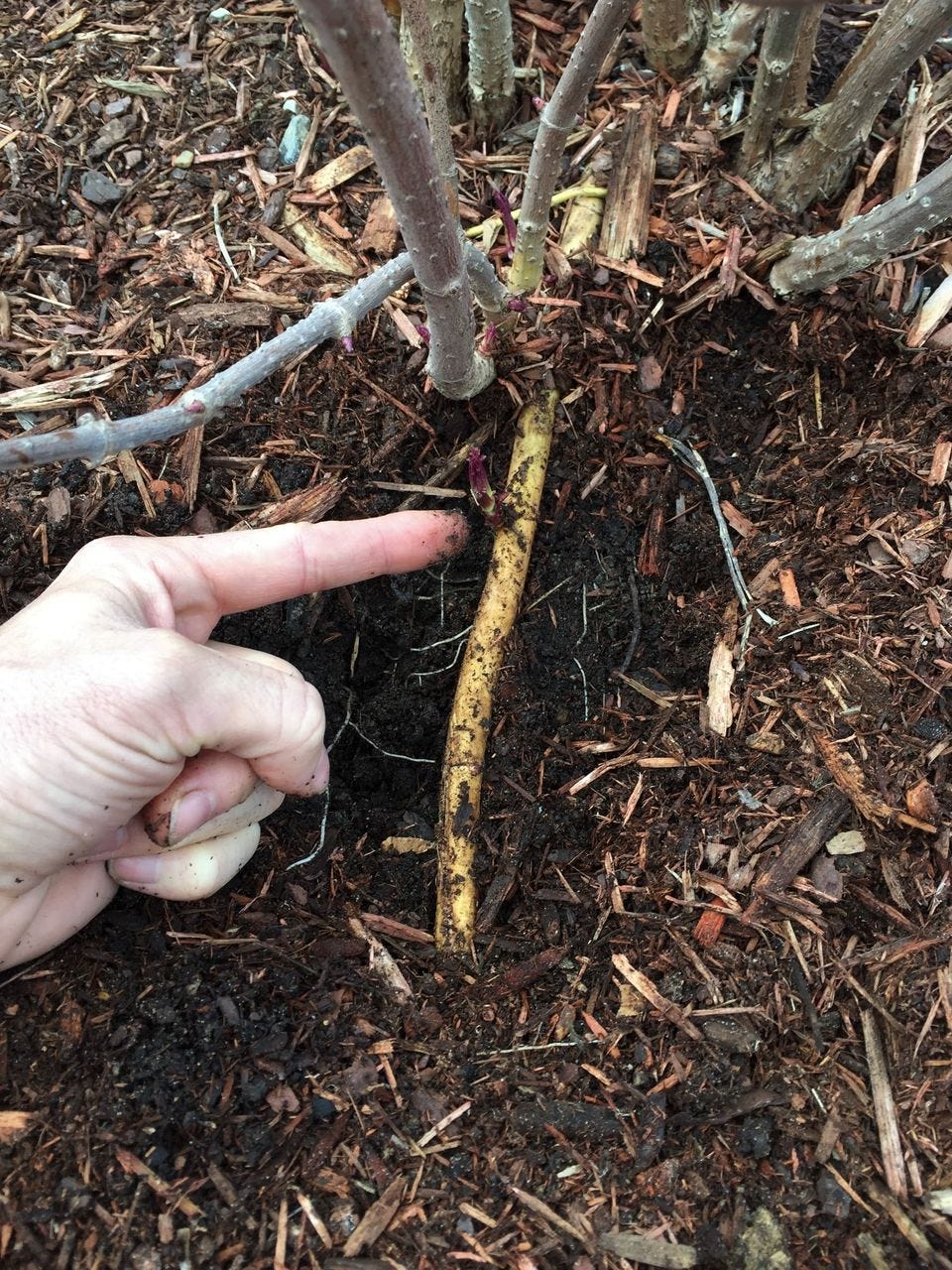
I basically pulled back the mulch around our Elderberry (sambucus canadensis) bushes carefully in march and found where the thicker lateral roots were about to send up 'suckers'.
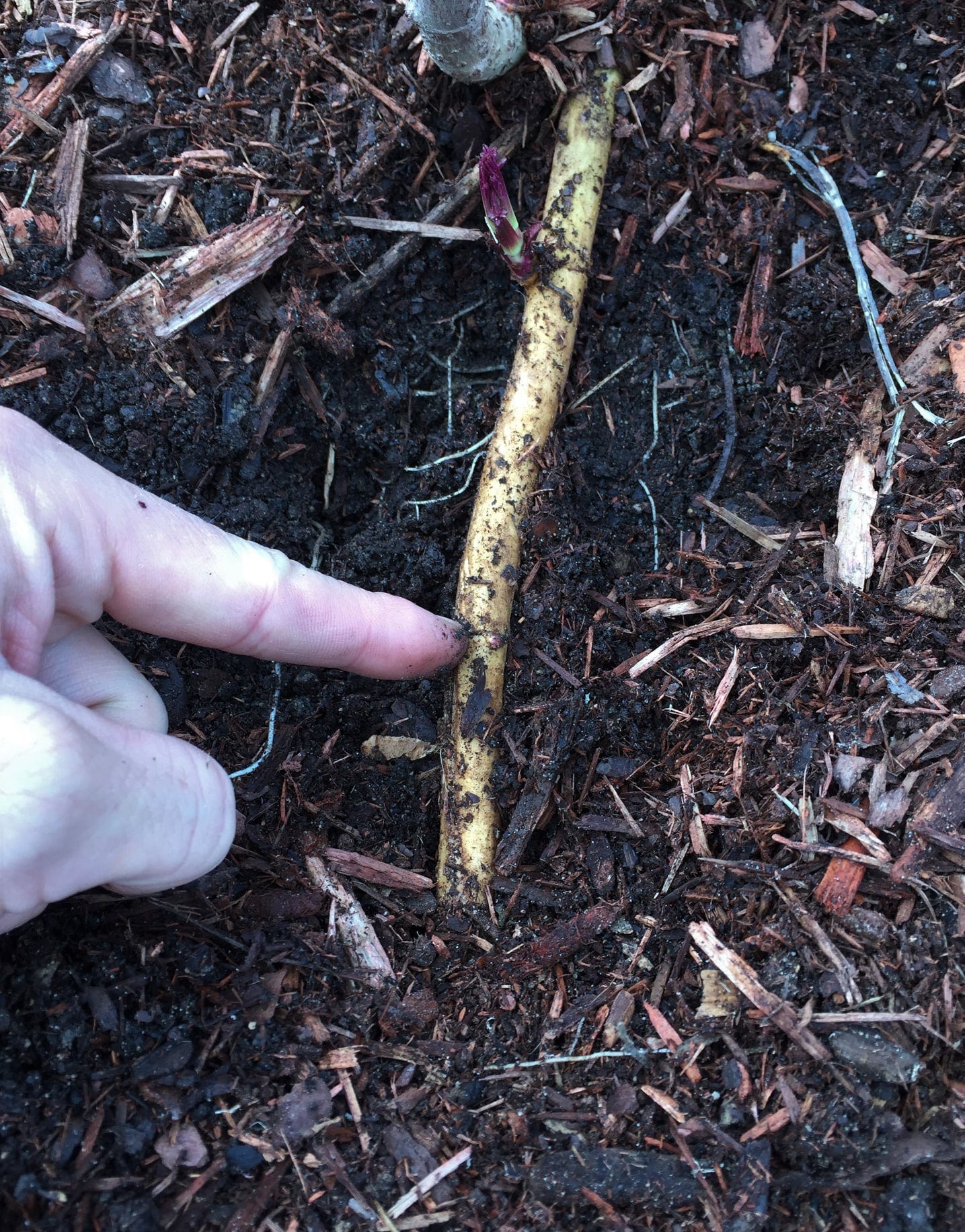
I then carefully loosened the vertical roots from the soil below and then cut the thicker lateral surface root into sections (each one of them with a little vertical root section and a bulge where I could tell a 'sucker' was going to form).
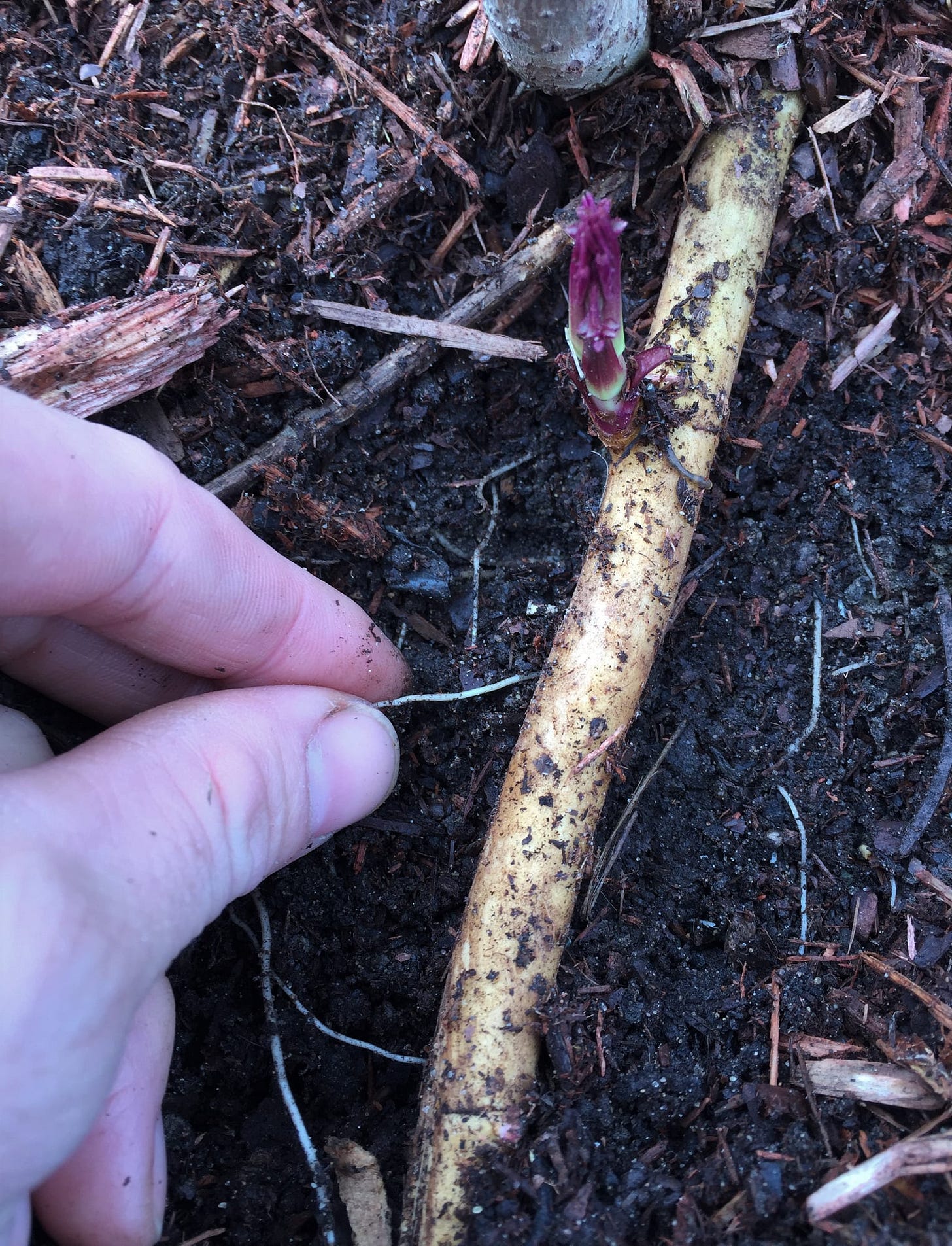
The cross sections were potted up in some compost/potting soil and then left them in a semi-sheltered area against our brick wall outside.
They sprouted after a week or so and began to form new leaves. It even snowed a couple inches and they seemed unfazed.
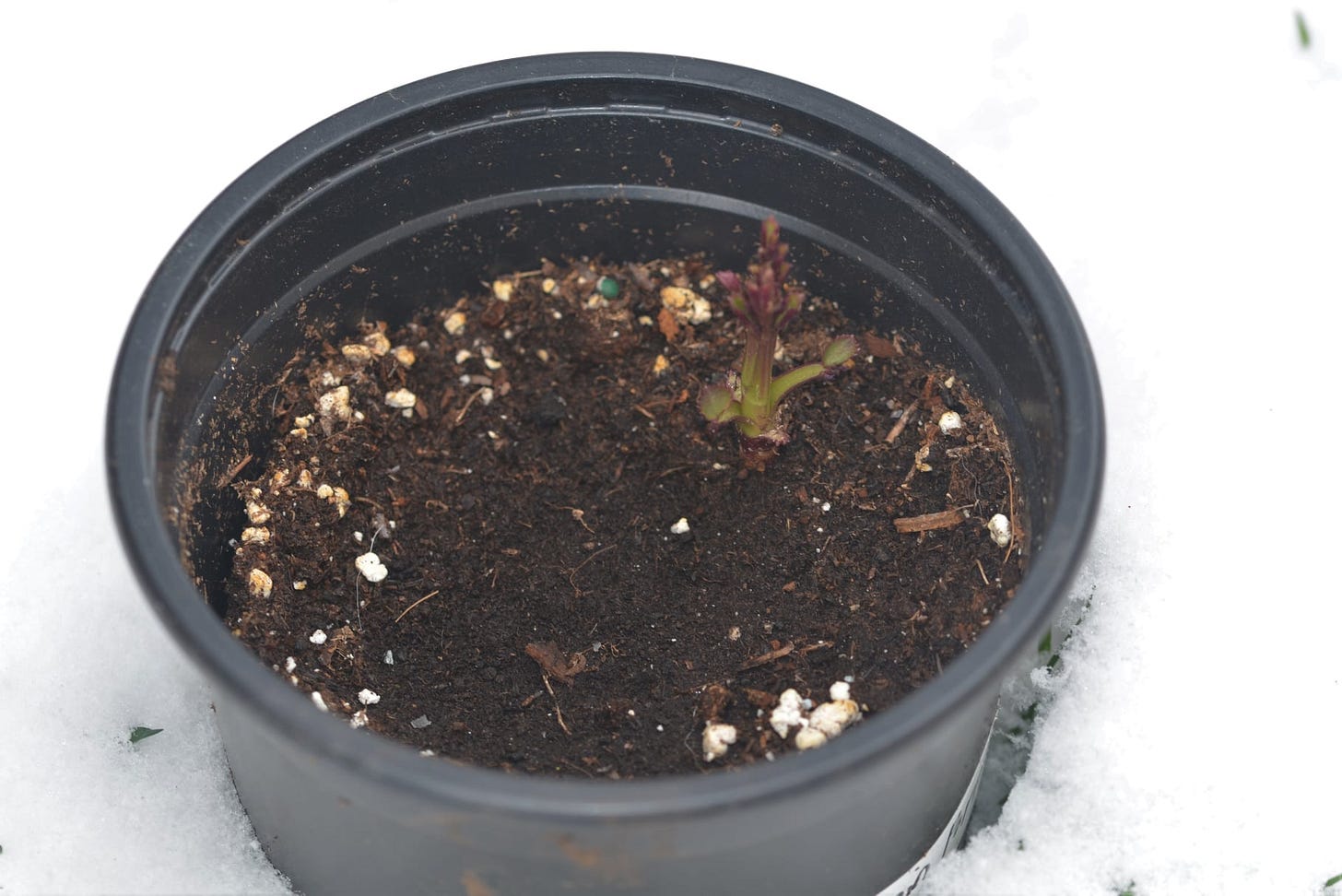
I like this method as it simultaneously helps manage unwanted suckers and provides easier propagation than doing hardwood cuttings inside (where I have limited growing space I would rather devote to plants started from seed).
They also make great additions to a food forest — albeit as an edge planting.
I also love how Elderberries are a source of abundant biomass.
Elderberry trees and shrubs are one of the quickest growing tree species to be found. After planting, it is possible to get upwards of 4 to 8 feet of growth in the first year alone! Furthermore, these trees respond well to aggressive pruning meaning that you can choose to either let them grow into tall trees that could become the canopy or sub-canopy layer of a food forest, or prune them to stay as small trees and shrubs.
The abundant biomass created by the quick growth of the tree makes the elderberry a great candidate for “chop and drop” mulch. Growing elderberry shrubs on contour will allow you to harvest excessive amounts of biomass “mulch” through your pruning that can then either be added to the compost pile or piled up for on contour hugelkultur beds or erosion barriers.
Furthermore, the abundant and large flowers on the elderberry tree are great for attracting pollinators. Planting several elderberry shrubs scattered throughout an orchard is a great way to help achieve maximum pollination. Since elderberry trees flower through much of the growing season, the bees in your orchard will benefit from having an abundant and constant source of food.
Thanks to a thoughtful comment from Jean (below this article) I now know that there are certain native bee species that will nest inside the dead hollow stems. This means prunings could also be used to create habitat for solitary bees, adding another amazing function of this plant.
In a previous post, I explored how you can forage for elderberries and extract usable juice/pulp for making food or medicine from the berries while also saving seed for propagation and/or sharing seeds with others. For those interested you can find that article here:
For more information on Elderberries:
https://www.permaculturenews.org/2017/08/14/benefits-growing-elderberries/
http://tcpermaculture.blogspot.com/2012/09/permaculture-plants-elderberry.html
https://www.gardensall.com/sambucus-canadensis/
I hope you found this information helpful and will try foraging for (or cultivating) some Elderberries and find peace of mind in the knowing that you are surrounded in food and medicine.
If we learn from Mother Nature and accept her open hand we can thrive and nurture our bodies in any and all situations (while staying guided by integrity and love).
We can align our wealth and health with the health and wealth of the living Earth and through merging with her regenerative capacity and inherent abundance we can become irrepressible.
We can lift ourselves and our communities out of the widespread modern day ‘poverty of plant knowledge’ and in doing so become resilient enough to survive and thrive no matter what life throws our way.
We are the ones we have been waiting for.


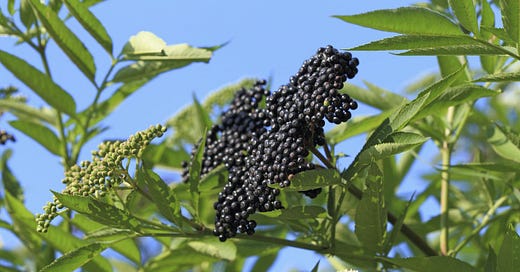




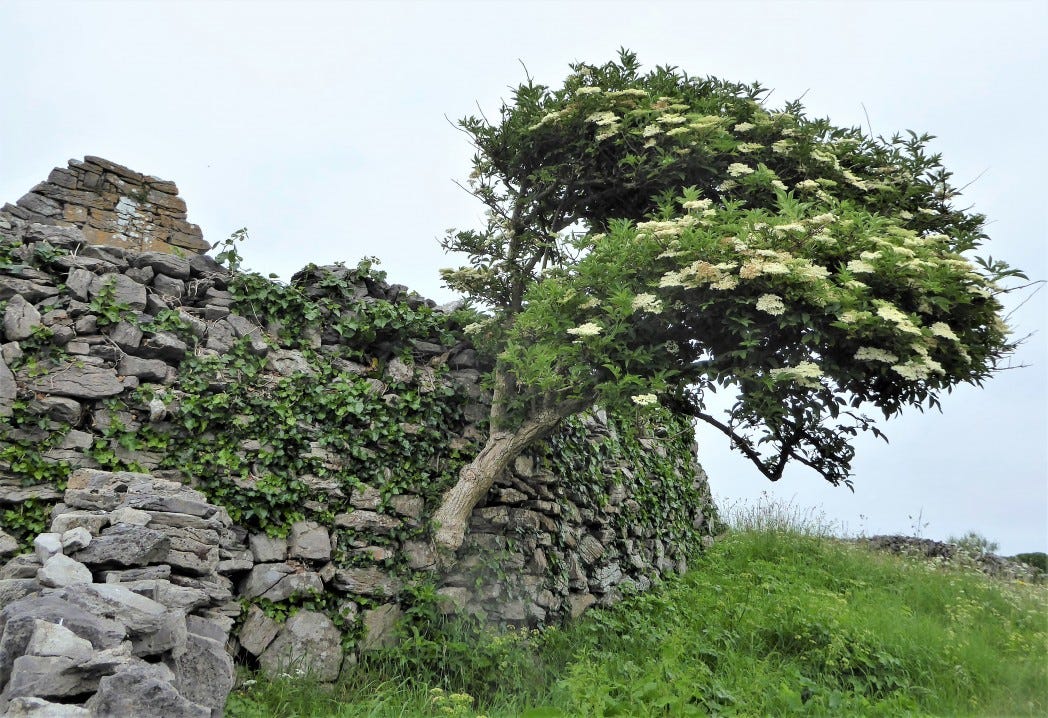
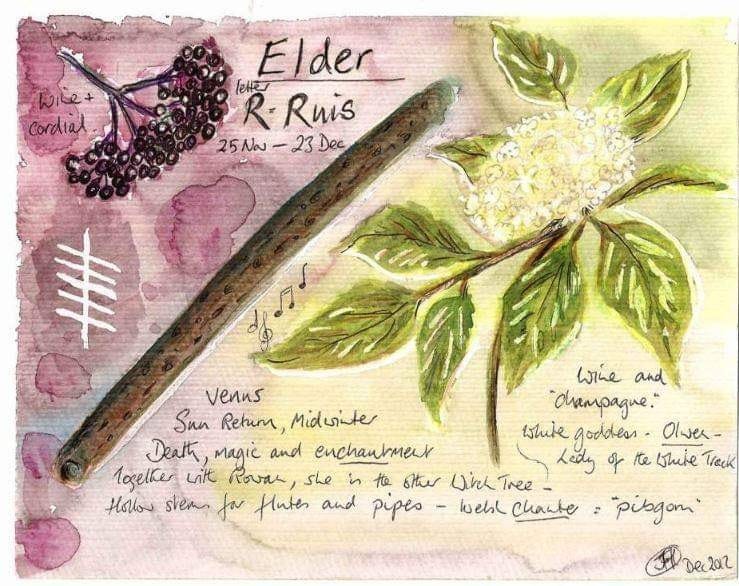

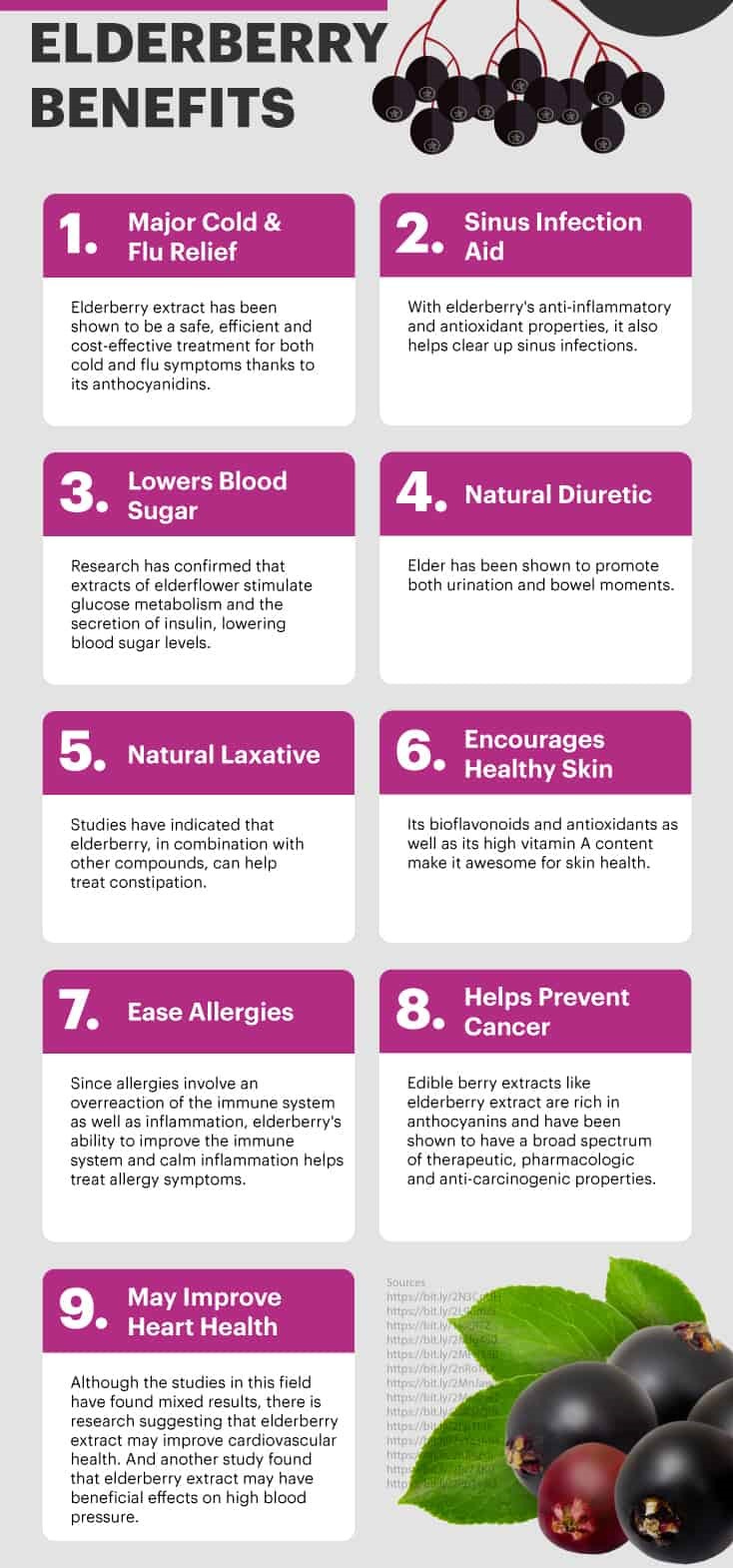
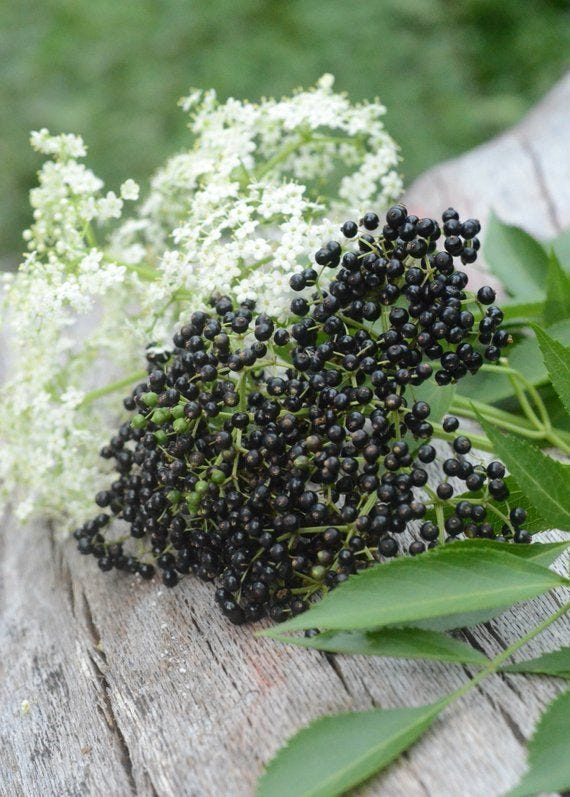
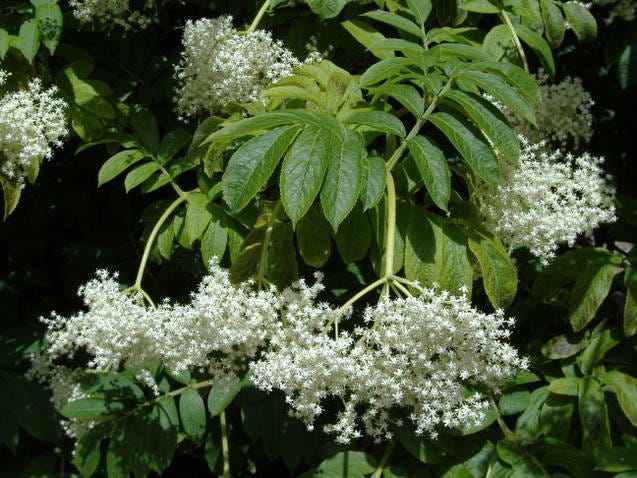

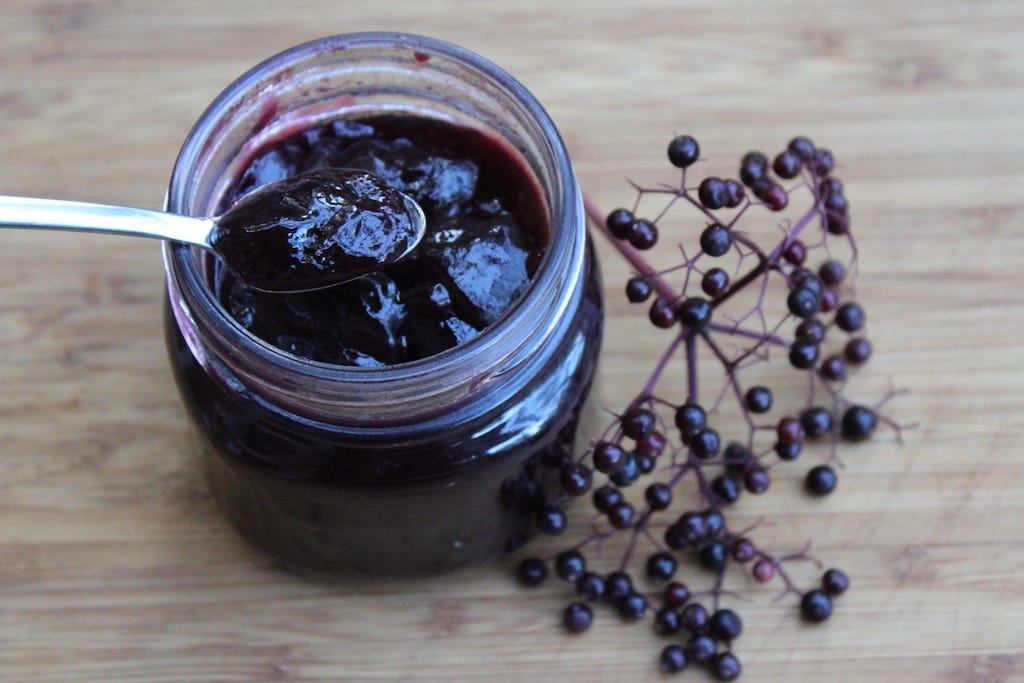

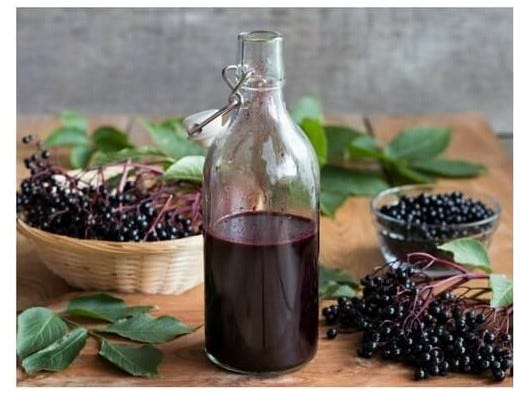
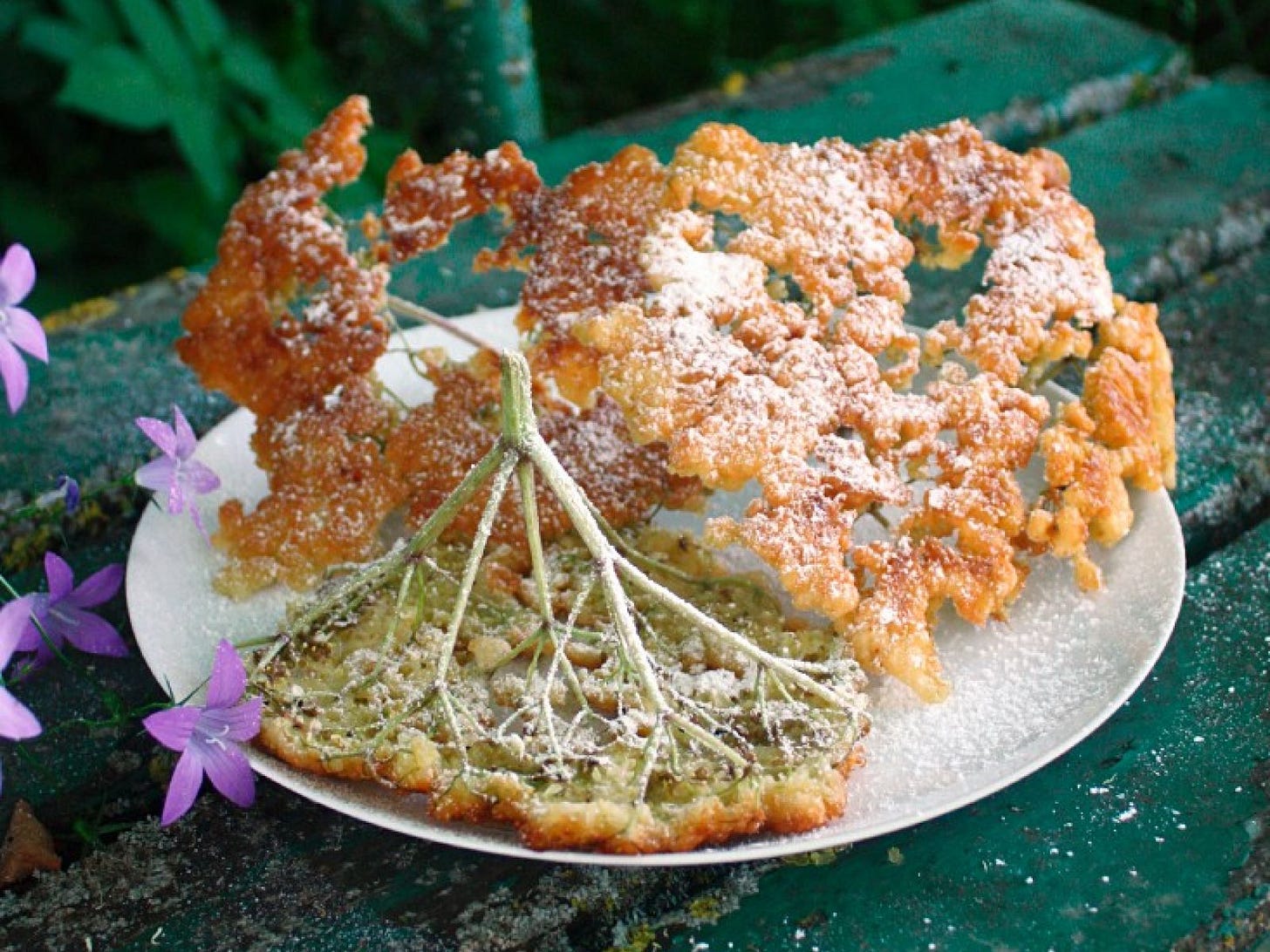
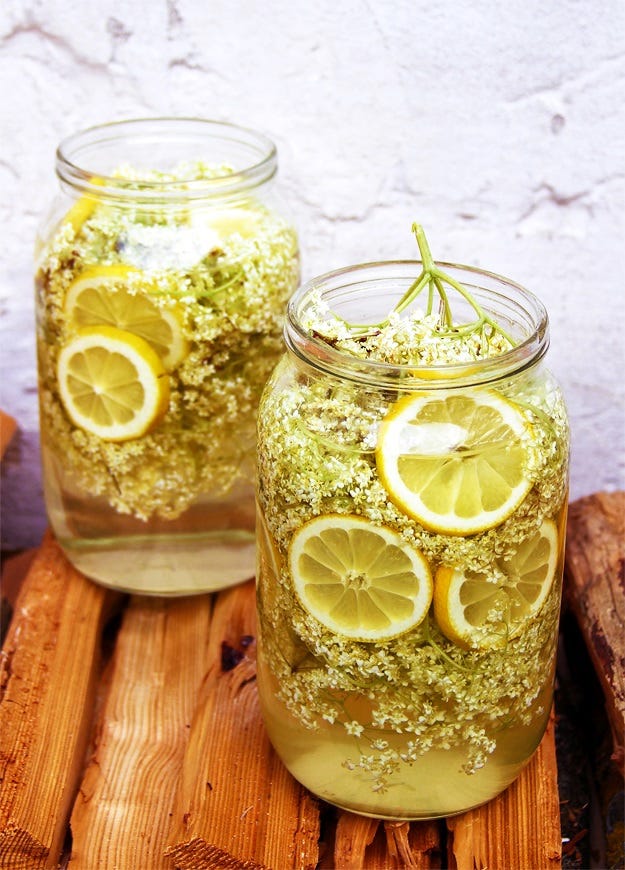
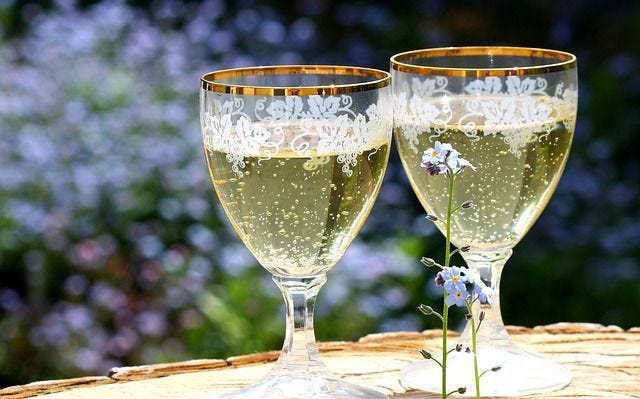
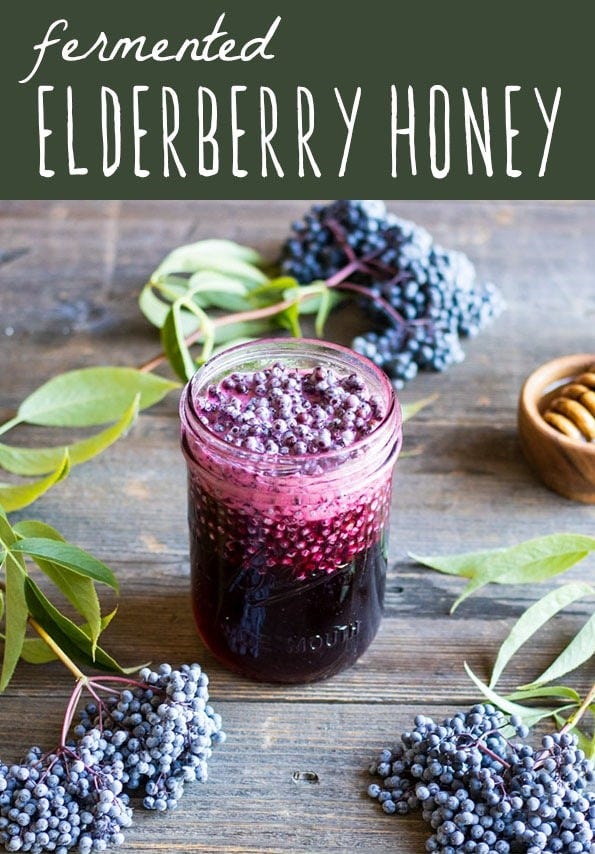
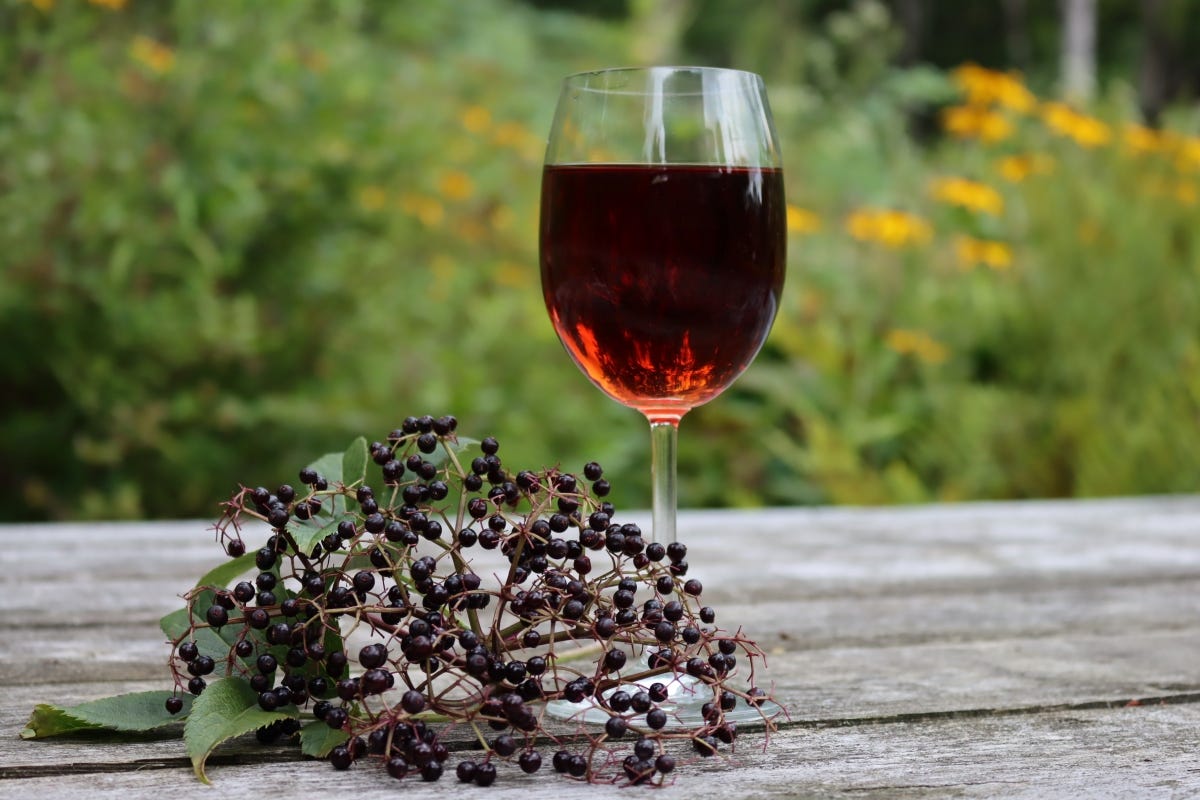
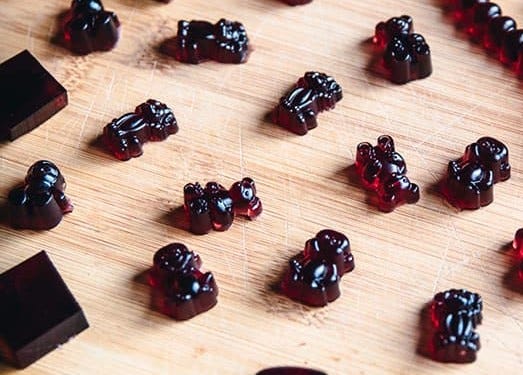
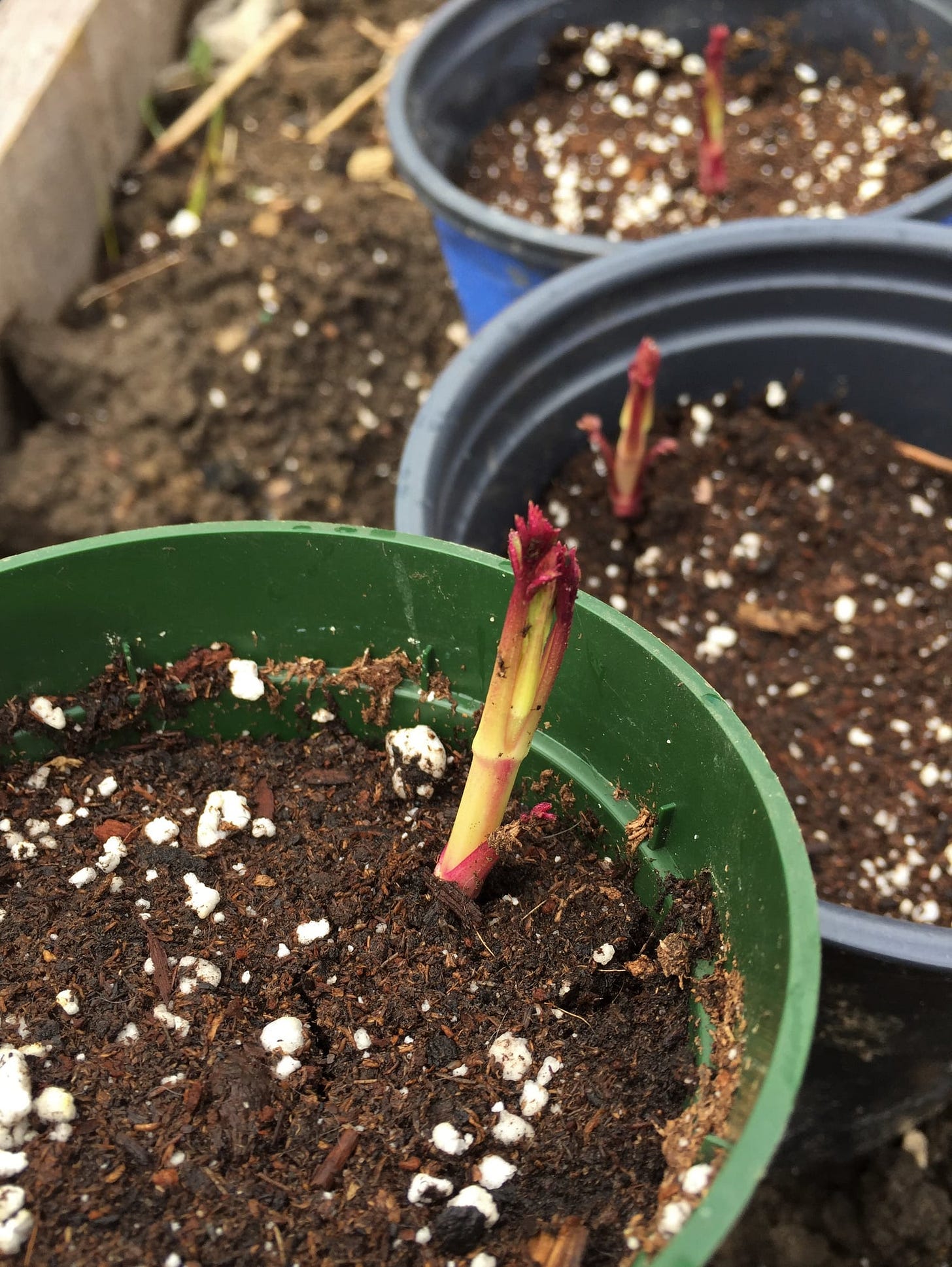
Another fantastic article! Queen of the Fairy! :) Of course our beloved Celtic ancestors would call her that! :) Such a wealth of information you've shared here, Gavin. When I was in Scotland I was blown away by all the Elderberry hedgerows. Since I moved to New Hampshire I've been searching for this plant to no avail. I bought two plants at a local nursery but they mistakenly got mowed down by my landlord at the end of the season before I could mark where they were planted. I'll be looking for them again in the spring. Also, some farmer friends I made at the farmer's market told me I could come gather some from their land. 💚
I used to make and sell Elderberry syrup but now I just mostly gift it to people. I've only ever been able to used the dried berries. I perked up when you said it was good for nerve damage - going to start drinking more of it for the carpal tunnel syndrome I'm dealing with. I usually add Astragalus, Cloves, Ginger, Rosehips, Cinnamon. I like the idea of adding White Pine! Going to do that in the next batch.
And, oh! Those flutes are magical!
Isn't Nature amazing? Looking forward to buying your book when it comes out!
One more wonderful thing about elderberry… there are certain native bee species that will nest inside the dead hollow stems. Joe-pye weed (Eupatorum purpureum) is good for the same reason, and seems to like the same kind of places.